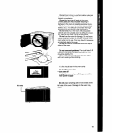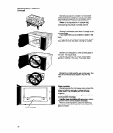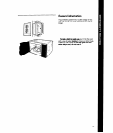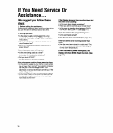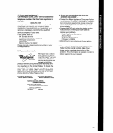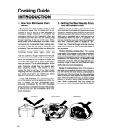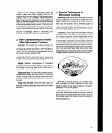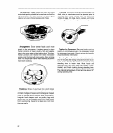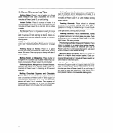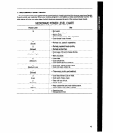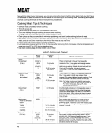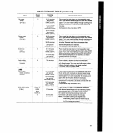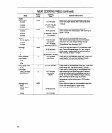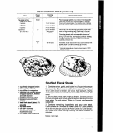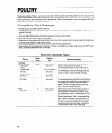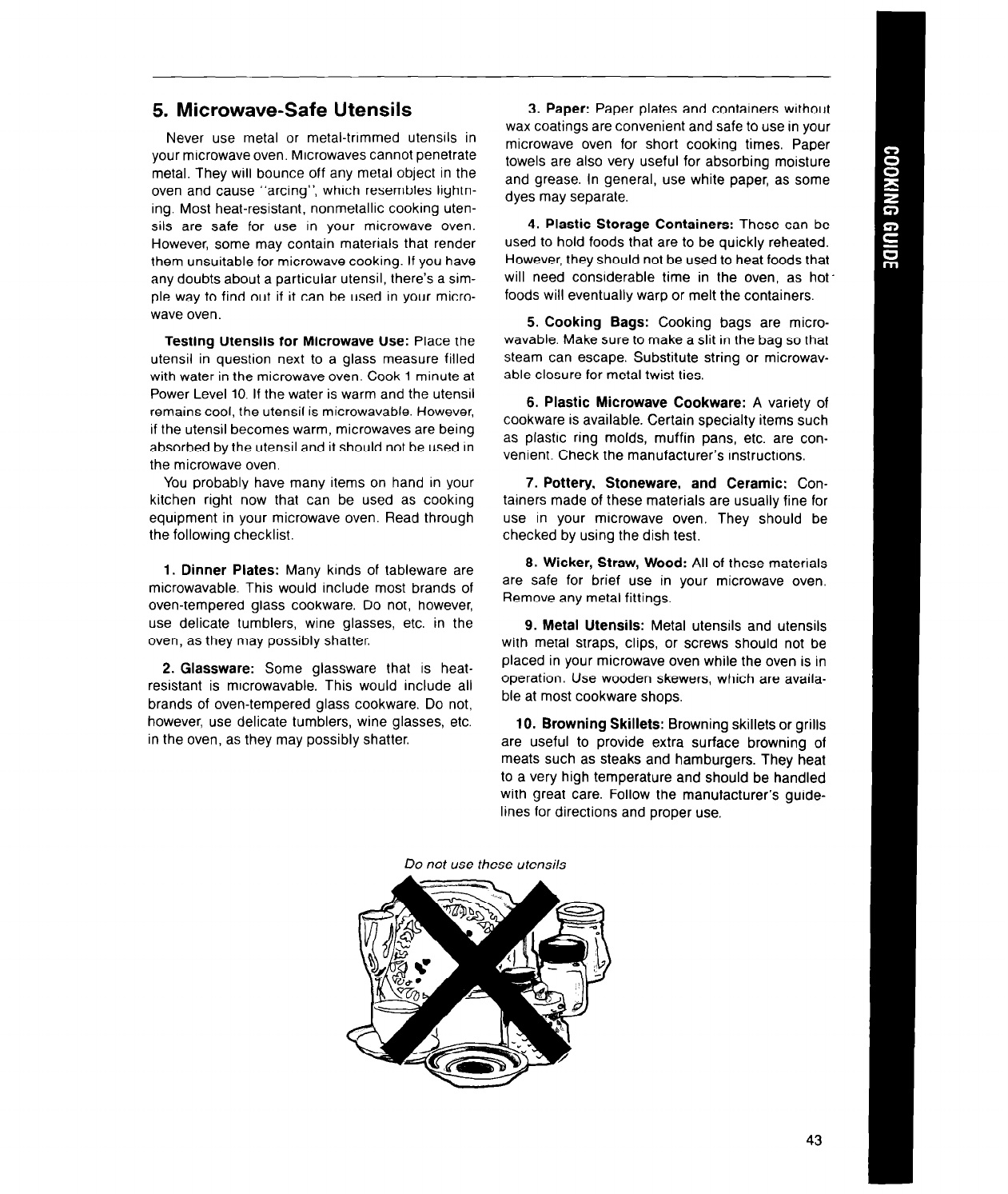
5. Microwave-Safe Utensils
Never use metal or metal-trammed utensrls in
your microwave oven. Microwaves cannot penetrate
metal. They will bounce off any metal object in the
oven and cause “arcing”, whrch resembles lightn-
ing. Most heat-resistant, nonmetallic cooking uten-
sils are safe for use in your microwave oven.
However, some may contain materials that render
them unsuitable for microwave cooking. If you have
any doubts about a particular utensil, there’s a sim-
ple way to find out if it can be used in your micro-
wave oven.
Testing Utensils for Microwave Use: Place the
utensil in question next to a glass measure filled
with water in the microwave oven. Cook 1 minute at
Power Level 10. If the water is warm and the utensil
remains cool, the utensil is microwavable. However,
if the utensil becomes warm, microwaves are being
absorbed by the utensil and it should not be used in
the microwave oven.
You probably have many items on hand in your
kitchen right now that can be used as cooking
equipment in your microwave oven. Read through
the following checklist.
1. Dinner Plates: Many kinds of tableware are
microwavable. This would include most brands of
oven-tempered glass cookware. Do not, however,
use delicate tumblers, wine glasses, etc. in the
oven, as they may possibly shatter.
2. Glassware: Some glassware that is heat-
resistant is microwavable. This would include all
brands of oven-tempered glass cookware. Do not,
however, use delicate tumblers, wine glasses, etc.
in the oven, as they may possibly shatter.
3. Paper: Paper plates and containers without
wax coatings are convenient and safe to use in your
microwave oven for short cooking times. Paper
towels are also very useful for absorbing moisture
and grease. In general, use white paper, as some
dyes may separate.
4. Plastic Storage Containers: These can be
used to hold foods that are to be quickly reheated.
However, they should not be used to heat foods that
will need considerable time in the oven, as hot-
foods will eventually warp or melt the containers.
5. Cooking Bags: Cooking bags are micro-
wavable. Make sure to make a slit in the bag so that
steam can escape. Substitute string or microwav-
able closure for metal twist ties.
6. Plastic Microwave Cookware: A variety of
cookware is available. Certain specialty items such
as plastic ring molds, muffin pans, etc. are con-
venient. Check the manufacturer’s instructions.
7. Pottery, Stoneware, and Ceramic: Con-
tainers made of these materials are usually fine for
use in your microwave oven. They should be
checked by using the dish test.
8, Wicker, Straw, Wood: All of these materials
are safe for brief use in your microwave oven.
Remove any metal fittings.
9. Metal Utensils: Metal utensils and utensils
with metal straps, clips, or screws should not be
placed in your microwave oven while the oven is in
operation. Use wooden skewers, which are availa-
ble at most cookware shops.
10. Browning Skillets: Browning skillets or grills
are useful to provide extra surface browning of
meats such as steaks and hamburgers. They heat
to a very high temperature and should be handled
with great care. Follow the manufacturer’s guide-
lines for directions and proper use.
43



